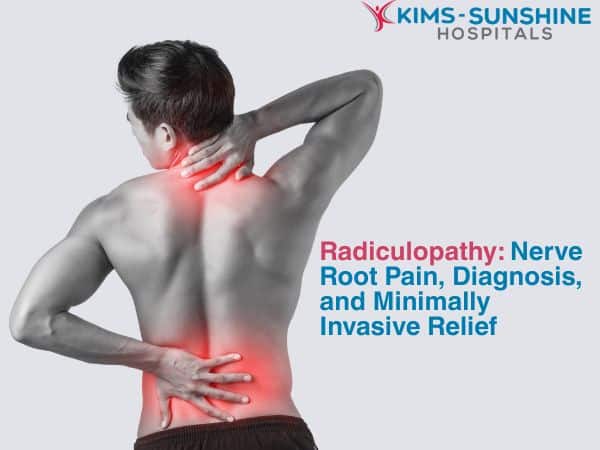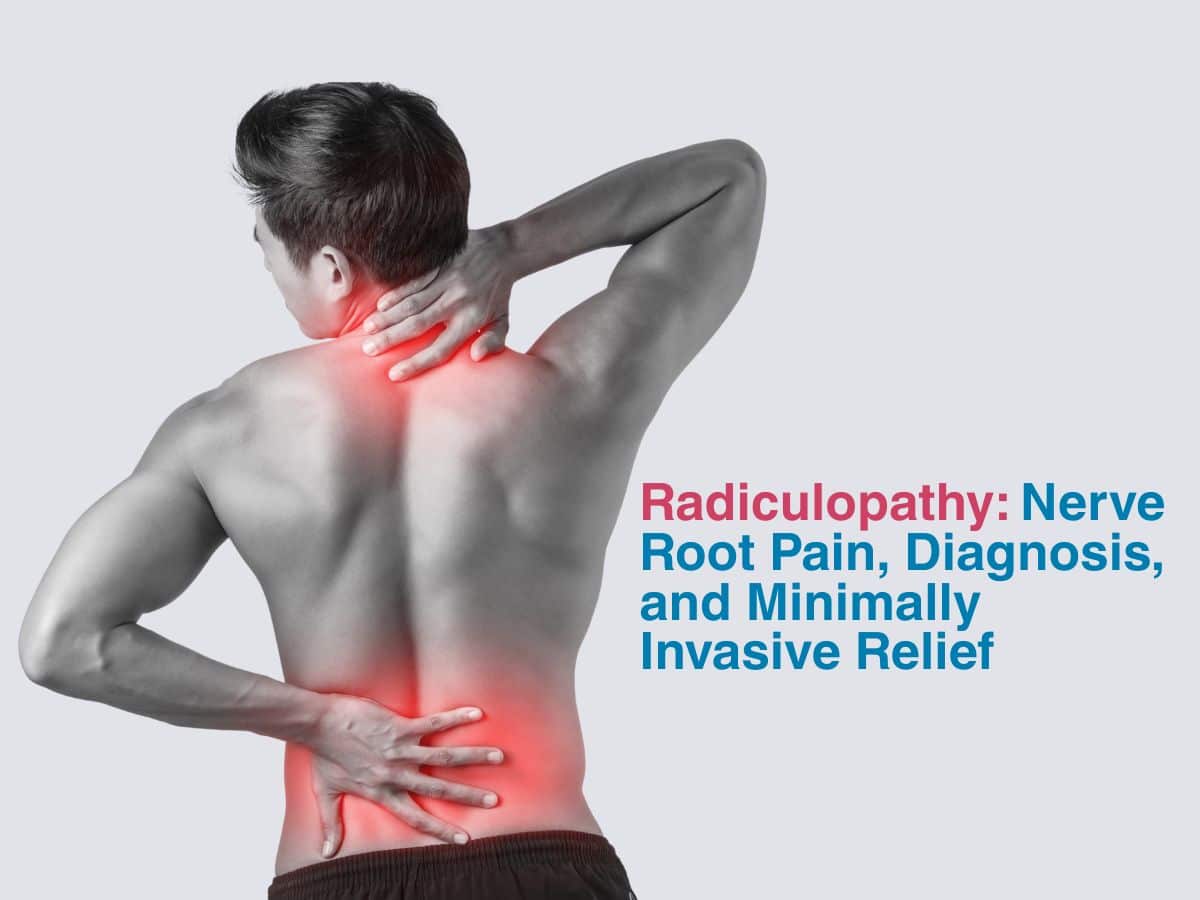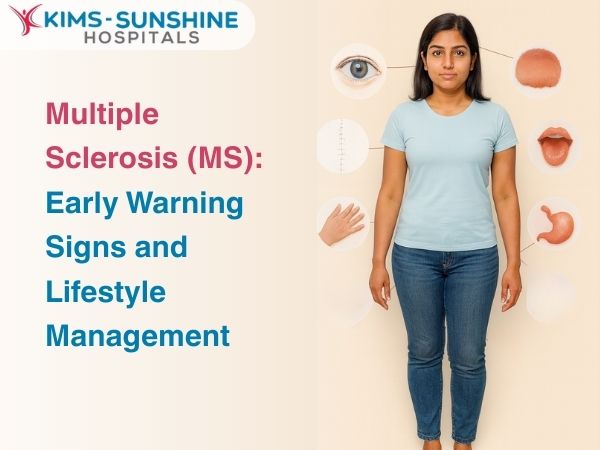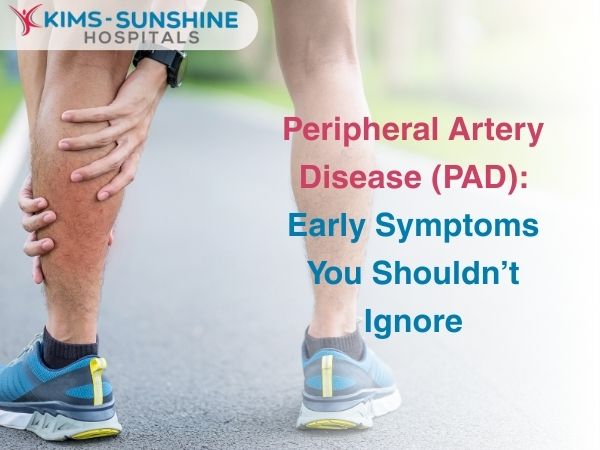
Radiculopathy: Nerve Root Pain, Diagnosis, and Minimally Invasive Relief
There is a particular kind of discomfort that feels as if it has travelled a long way to reach you. It does not bang its fists. It hums quietly in the nerve endings, tracing the length of the spine. This is radiculopathy,a condition not of surface pain, but of deeper unrest. It begins in the places where the spine cradles the roots of nerves and when those roots are pressed, irritated, or inflamed, they carry their discomfort outward. The result is a sensation that moves with eerie intelligence: down the arm, across the shoulder, into the calf or behind the knee.
Signs of Cervical or Lumbar Radiculopathy
The neck and lower back are not merely hinges. They are thresholds – places where nerves must pass freely to serve the rest of the body. When these passageways narrow, the nerves signal their discontent.
Cervical radiculopathy often speaks through:
- A dull ache that spills down from the neck into the shoulder or hand
- A tingling that arrives without provocation
- A strange weakness – the kind that makes you drop a pen or fumble with buttons
- A discomfort that wakes with you or worsens when the head tilts or turns
Lumbar radiculopathy, by contrast, walks lower:
- It sends sharp, electric threads of pain from the lower spine into the leg. It makes walking feel imbalanced, sitting intolerable and standing uneven.
- It saps strength from the foot, making it seem heavy and unfamiliar
- It is often mistaken for mere sciatica, though its roots dig much deeper.
These are not ordinary sensations. They are stories. Narratives etched in flesh and nerve, asking to be read carefully.
How Is Radiculopathy Diagnosed by Doctors?
The diagnosis of radiculopathy does not unfold like a checklist. It begins with observation. A doctor will notice how you turn your head, how you lift your foot, or how your fingers tremble when you extend your hand. Then come the tools:
- MRI scans, not just to see the bones, but to glimpse what is pressing beneath them.
- Electromyography (EMG) and nerve conduction studies, which listen in on the secret conversations between your spine and your muscles.
- Physical tests, where pain is gently invited forward by posture, by movement or by the probing touch of a finger in just the right place.
Minimally Invasive Treatments for Radiculopathy
The most effective treatments are often those that feel least invasive:
- Physiotherapy, not as exercise, but as choreography – for retraining the body to move in a way that no longer harms it.
- Anti-inflammatory medicine to gently calm the storm around the nerve.
- Epidural steroid injections, placed with the precision of a poet’s comma to ease the pressure without disruption
- Postural corrections such as standing differently, sitting with intention, sleeping in ways that invite alignment rather than tension.
- Thermal therapies where warmth invites relaxation and cold tempers swelling.
Conclusion
Radiculopathy is not chaos. It is the nervous system’s attempt to name a problem that has gone unspoken. It asks not to be feared, but to be respected. With careful listening, with treatments that honour rather than overpower the body, even the most persistent nerve pain can be softened and in that softening, there is space for recovery, for movement and for much needed stillness.
Frequently Asked Questions
What is radiculopathy and how does it affect the body?
What causes nerve root pain in radiculopathy?
How do I know if I have cervical or lumbar radiculopathy?
What are the common symptoms of radiculopathy?
A radiating or shooting pain in the arm or leg
Numbness or a pins-and-needles sensation in the hands or feet
Muscle weakness in a specific limb
Discomfort that intensifies with movement, sneezing, or coughing
These symptoms often come in waves. Some days feel manageable. Others feel electric. The nerve speaks differently each day, but it rarely stays silent.







